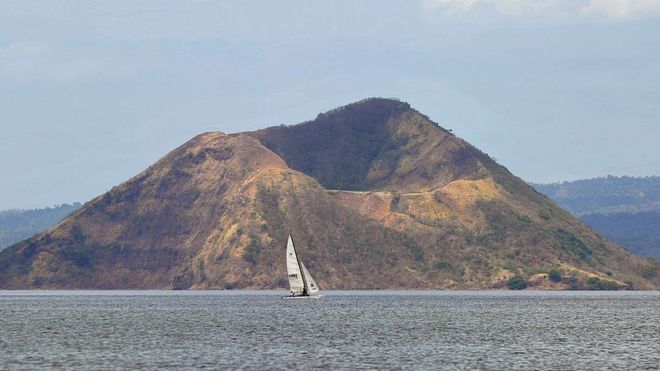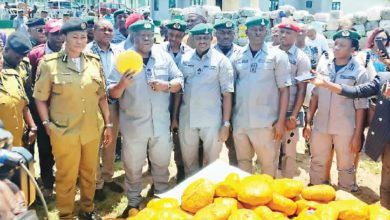
Taal: The ‘very small but dangerous volcano’
- Taal is one of the Philippines' most active volcanoes.
Taal is one of the Philippines’ most active volcanoes.
Over the past few days, it’s begun spewing lava, triggering earthquakes and emitting huge plumes of ash that have spread across the island of Luzon and beyond.
Scientists fear a bigger “hazardous eruption” is imminent.
Taal is tiny, as volcanoes go, but it has been deadly before. And according to Renato Solidum, the head of the Philippines’ Institute of Volcanology and Seismology (Philvolcs) , it is “very small but a dangerous volcano”.
So what is it about Taal that has got people so worried?
It’s a ‘complex’ volcano
Taal is defined as a “complex volcano” – it doesn’t have just one main vent or cone but several eruption points that have changed over time.
“Taal volcano is a baby volcano sitting within a much bigger caldera volcano,” said Ben Kennedy, associate professor of physical volcanology at the University of Canterbury in New Zealand.
These new eruptions are taking place on Volcano Island, which sits inside Lake Taal, a 234 sq km lake formed in the caldera of an earlier massive eruption.
Volcano Island alone has 47 craters and 4 maars – volcanic craters that form when hot magma comes into contact with shallow ground water, producing a violent steam explosion. Other vents and eruption points are underneath Lake Taal.
The entire Volcano Island has been marked as a permanent danger zone by Phivolcs.
It’s unpredictable
At least 35 eruptions have been reported within the last few hundred years – the most recent was in 1977.
A “very violent” eruption in 1911 from the main crater caused rock particles and fragments to shoot out of the volcano, according to news outlet Rappler. That event killed more than 1,300 people.
US-based volcanologist Jess Phoenix says Taal has “a history of multiple eruption styles”, so it creates threats on the ground in the form of lava and in the air through ash.
There’s also the risk of a “volcanic tsunami”, she adds, which can be trigged by falling debris after an eruption generating waves in the lake.
“Any of these types of threats would be a major hazard for people nearby,” says Ms Phoenix.
The lake is also “potentially dangerous”, as water could interact with the magma, making it “more explosive”, said Mr Kennedy.
“If water gets to the exploding lava surface it flashes to steam and rapidly solidifies the lava it interacts with, making a very fine ash that explodes higher into the atmosphere and can travel further,” he told the BBC.
It’s close to lots of people
One of the main reasons people are worried is Taal’s proximity to a lot of people.\
“Metro Manila is a few tens of kilometres away with a population of over 10 million, and there are multiple cities within 30km that have more than 100,000 people in each, not counting the smaller towns in between,” James White, head of geology at the University of Otago, told the BBC.
The UN Office for the Co-ordination of Humanitarian Affairs (OCHA) says that more than 450,000 people are estimated to live within the newly designated 14km danger zone.
Thousands have already been evacuated but many remain behind.
Despite the danger posed by volcanoes, many choose to live near them due for various reasons – one of them being the fertile volcanic soil that can be found in these parts.
What’s the situation like now?
On Tuesday, Phivolcs said Taal had generated “500 metre tall lava fountains, topped by dark gray steam-laden plumes reaching approximately 2km tall that dispersed ash”.
“The plume being 2km tall is actually small. A 500m tall lava fountain is substantial, but it may not be super vigorous or strong,” Ms Phoenix told BBC News.
Mr White, however, described a 500m tall fountain as a “very strong fountain”, adding that there would be “a lot of magma being erupted”.
Heavy ash also continues to fall on nearby municipalities and a total of 212 volcanic earthquakes have taken place so far.
“The seismic activity seems to indicate that there is more magma under the volcano and the eruption may continue,” said Mr Kennedy. “However volcanoes can just as easily quiet down as become more explosive.”
Earthquakes and volcanic activity are not uncommon in the Philippines, which lies along the Ring of Fire – a zone of major seismic activity, which has one of the world’s most active fault lines.



